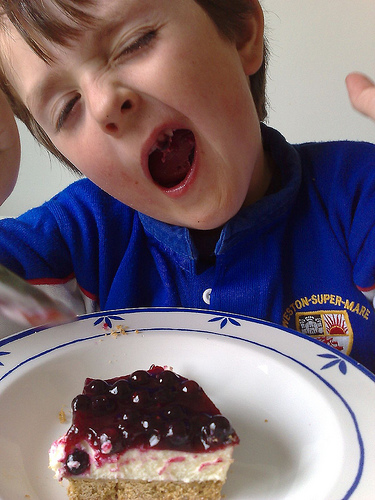Feminism for Children
For much of my daughter’s life, it has never occurred to her that she isn’t able to do things that boys can do, or that boys shouldn’t do things that girls do. As with a lot of parents, we made a conscious effort to avoid buying her gender-specific toys, books, and clothes from a very young age. Of course, there are times that she gravitates towards more traditional items that are marketed towards girls, and that is fine because she also loves lots of things that are marketed towards boys as well. Lately, she has become much more conscious of gender stereotyping, and my heart swells when she notices sexism and points it out with disgust.
While I’m always looking for strong female role models for my daughter, I sometimes forget that it is equally important to seek out material for my son that shows men and women, or boys and girls, as equals who don’t need to be limited by behaviors and activities. The heart of feminism (to me anyway) is tolerance, equality, and treating everyone with respect, and what better place to start than with children.

Talk about female role models with your kids. It is easy to get depressed about the lack of attention that is given to fascinating and accomplished women. These days there are so many great women role models around for young boys and girls, not only current figures but a long list of historical figures that you can introduce your children to. When you hear about inspiring women and girls, talk to your children about them; let them see what women are capable of doing. Here is a small sample of some of my favorite current female role models for kids.
- Malala Yousafzai is an incredible young woman who your kids should know about. Malala is a girl’s education activist, and her story is hugely inspiring for anyone. After being shot in the head by the Taliban at age 14 and surviving, she continues to fight for the right for girl’s access to education. She recently won the Nobel Peace Prize; if you want to learn more about her story, her biography is a great read.
- Emma Watson not only plays a feminist role model for girls as Hermione Granger in the Harry Potter series, she recently gave a fantastic speech at the UN on ending gender inequality that your kids should watch.
- If you have a daughter (or son) who loves engineering and space, you should know about Natalie Panek. She is a rocket scientist, explorer, and advocate for women in technology. I heard her speak at We Day Toronto 2014, and she would make a great role model for anyone interested in pursuing a career in space exploration.
You can find lists all over the web of top women politicians, entrepreneurs, artists, activists, scientists, writers, inventors, etc. If your child has a particular area of interest, find women in that field and talk to your kids about their achievements just as you would famous male figures.
Read books to boys and girls with strong female characters. When you are choosing books for your very young children to read, be careful with the types of books you are selecting. Books are a large part of how children learn how to figure out the world, especially when they are very small. Choose a wide variety of books; avoid books that stick with gender stereotypes and embrace books with strong female characters. Look for stories with characters who take on all types of behavior and activities regardless of gender.
In my experience, most modern books are (for the most part) very gender-neutral (or maybe I just gravitate towards books that don’t follow the gender roles). There is a big market for empowered girl’s books, especially in the last few years. Here are a few popular ones to check out:
- Rosie Revere, Engineer by Andrea Beaty
- Violet the Pilot by Steve Breen
- Not All Princesses Dress in Pink by Jane Yolen and Heidi E. Y. Stemple
- Ninja Red Riding Hood by Corey Rosen Schwartz and Dan Santat
- The series Ordinary People Change World by Brad Meltzer has fun comic-like books about Rosa Parks and Amelia Earhart. They are similar to the very readable and exciting Who Was book series.
Challenge kids when they repeat stereotypical ideas about gender norms. Even if you are the most careful parent when it comes to trying not to define gender roles to your kids, they will still pick up on what society believes is a woman’s role or a man’s role, it’s impossible to avoid. Children at school will heavily influence your kids, the media, family, and friends, so when you notice your child is limiting the types of roles that either sex can be through discussion or play talk, challenge the idea of what is accepted.
Discuss the sexualized image of women. It’s pretty hard to avoid sexualized images of women, all you need to do is turn on your TV, computer, open a magazine, watch a music video or even just walking down the street you will see billboards with hyper-sexualized images. Your kids are seeing what you are seeing, and even if your first instinct is to ignore it or not draw attention to it, it’s much better to discuss your thoughts about what you are seeing with your child. It helps them to process what the image is showing and sort out their ideas. The sexualization of women (and men to a lesser degree) is a part of the culture that we live in, and it is essential to keep an open dialogue with your kids and give them tools to interpret what they are looking at.
Show kids that there is room for both females and males to be equally smart. This sounds like a weird thing to say, but there are studies showing that as girls get older, they feel the need to ‘play dumb’ to please boys. According to the author of one study, “Girls feel they must downplay their abilities, pretending to be less intelligent than they are, not speaking out against harassment, and withdrawing from hobbies, sports, and activities that might seem ‘unfeminine’.”
This is a huge issue to overcome, but start by reinforcing the idea that being smart is cool for both genders. Boys need to be taught that they don’t need to feel threatened by intelligent females, and girls need to have examples of smart women who aren’t afraid to show their intelligence. Amy Poehler has a great website and web series called Smart Girls that offers music, advice, info about other cultures, and lots of other exciting things.
Think about gender stereotypes when you are buying toys. Try to resist toys that are traditional toys for a particular gender. Sometimes the lure of princesses or pink is too much for some kids, but it’s not something parents necessarily need to encourage. Living in a house with a boy and a girl, we have a wide variety of toys to choose from, and when left to their own devices, kids don’t care if the toy is for a girl or a boy, it’s either a good toy or a crappy toy. It is the toy marketers who are pushing the stereotypes onto kids. If you are curious about what message you are sending to your kids through their toys, check out the Pink Stinks and Let Toys Be Toys campaigns.
Think about the messages you are sending to boys. If there is ever going to be true equality, everyone has to be involved, it’s great to empower girls, but boys also need to be shown different ways to express their masculinity and that it is okay for them to let everyone be equal. This is just as important as empowering girls. If boys are shown that it is okay to have feelings, be emotional, and loving, they will be able to form happy and healthy relationships with women. There is still a long way to go before women all over the world overcome the current wage-gap, access to education, and abuses against women issues that plague society.
Model feminist behavior. Kids are always watching what their parents are doing. They watch how you interact with people, and they see how you treat yourself. They pay attention to your work and what you do in the house. Children also listen to your ideas and take them on as their own. So you need to show your children through your example what it means not to be limited by your gender.
I think there are lots of wonderful and smart feminists girls and boys who want everyone to be treated equally and who don’t feel limited by pressures from society. These are the future leader who will truly make the world a much more humane place to live, and it is essential for parents to recognize this and encourage a society that treats everyone equally.

